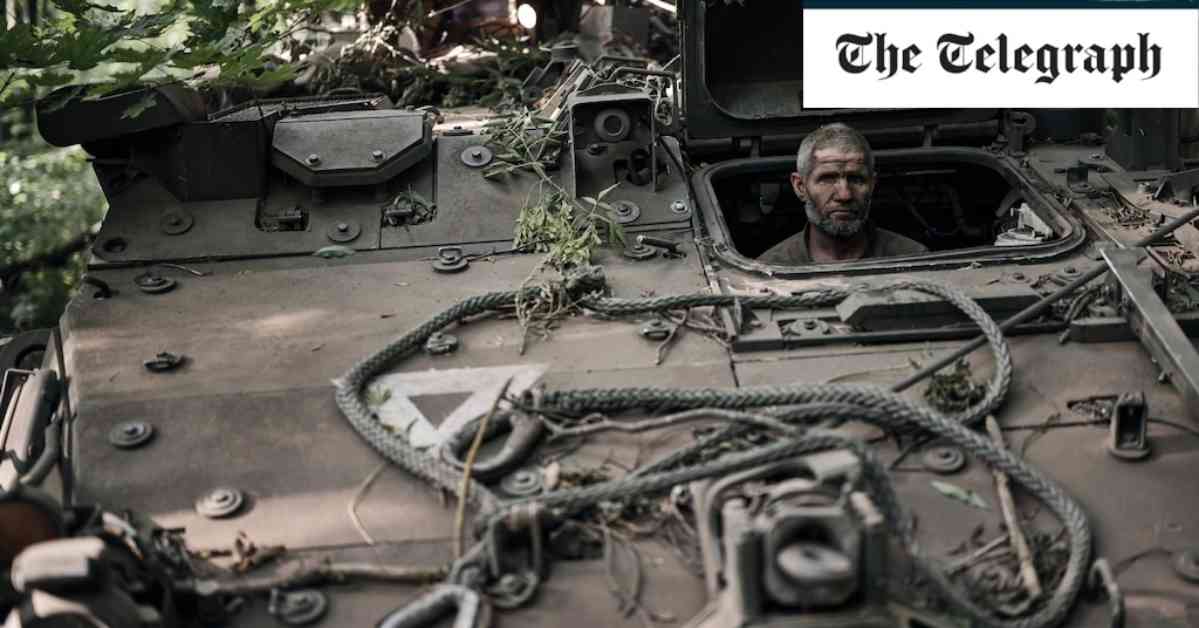Russia has made a strategic move to defend its territory in Kursk by shifting “several thousand” troops from occupied Ukraine, as reported by US officials. While the exact number of troops transferred remains under investigation, sources suggest at least 1,000 soldiers have been redirected to the border region where Ukrainian forces initiated a cross-border assault last week. This decision reflects Russia’s focus on safeguarding its own lands amidst ongoing military operations in northeast Ukraine. National Security Council spokesperson John Kirby stated, “It is apparent to us that Mr. Putin and the Russian military are diverting some resources, some units, towards the Kursk Oblast to ostensibly counter what the Ukrainians are doing.”
The relocation of troops should not be interpreted as a concession by Russia, clarified Mr. Kirby, emphasizing that active combat continues along the northeastern front in Ukraine. Kyiv has asserted territorial gains of 1,150 square kilometers of Russian land spanning over 80 settlements due to their cross-border incursion, prompting the evacuation of approximately 200,000 Russian citizens. This mass displacement marks the largest evacuation since the Second Chechen War, underscoring the severity and scale of the conflict.
### Tactical Maneuvers and Military Developments
As tensions escalate between Ukraine and Russia, recent military developments shed light on the intensifying situation. Ukrainian forces successfully intercepted and neutralized five drones launched by Russian troops during an overnight attack, showcasing their effectiveness in combat. Additionally, Russia employed three ballistic Iskander-M missiles in the assault, underscoring the utilization of advanced weaponry in the ongoing conflict. The air force’s swift response reflects Ukraine’s commitment to defending its sovereignty against external threats.
In a separate incident, reports emerged of Ukrainian forces targeting a ferry crossing in Crimea, with preliminary information indicating strikes in Kerch and Chernomorsk. The Russian Ministry of Defence claimed to have intercepted and destroyed five aircraft-type UAVs over the Black Sea, along with two boats allegedly heading towards Crimea. These confrontations underscore the volatile nature of the conflict, with both sides engaging in tactical offensives to gain strategic advantages.
### International Reactions and Diplomatic Efforts
The global community closely monitors the evolving crisis in Ukraine, with key stakeholders expressing varied perspectives on the conflict. A US-Russian ballerina, Ksenia Karelina, faced a harsh 12-year jail sentence for donating £40 to Ukraine, prompting condemnation from the Biden administration. John Kirby, the White House’s national security communications advisor, criticized the sentence as “vindictive cruelty,” highlighting the lack of justice in Moscow’s legal system.
Belarusian President Aleksandr Lukashenko, a prominent ally of Russia, called for an end to the war between Russia and Ukraine following Kyiv’s incursion into Kursk. Lukashenko’s plea for peace underscores the regional implications of the conflict and the urgent need for diplomatic resolutions. Amidst escalating tensions, efforts to de-escalate hostilities and engage in dialogue gain significance in averting further violence and instability in the region.
### Geopolitical Implications and Strategic Concerns
The incursion of Ukrainian forces into Kursk has raised serious concerns about the potential for wider conflict and its geopolitical ramifications. Russian lawmaker Mikhail Sheremet warned that Ukraine’s actions could trigger World War 3, citing foreign involvement and attacks on civilian infrastructure as destabilizing factors. The absence of nuclear saber-rattling from Moscow despite prolonged incursions on Russian soil underscores the complex dynamics at play and the shifting power dynamics in the region.
The bold military actions by Ukraine, including the seizure of key territories and settlements, have challenged Moscow’s traditional strategies and exposed vulnerabilities in their defense mechanisms. The ongoing crisis poses a significant challenge for the Kremlin, testing their resilience and adaptability in the face of unexpected incursions. As the conflict escalates, the international community closely monitors developments, seeking avenues for de-escalation and conflict resolution to prevent further escalation and humanitarian crises.
In conclusion, the evolving situation in Ukraine underscores the volatile nature of regional conflicts and the urgent need for diplomatic solutions to mitigate violence and ensure stability. The strategic maneuvers by both Ukrainian and Russian forces reflect the high stakes involved and the complex dynamics shaping the conflict. As the crisis unfolds, international cooperation and dialogue are essential to address the root causes of the conflict and prevent further escalation into a broader regional conflict.












